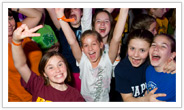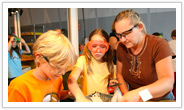Dawes Arboretum:
Nature is a beautiful thing that can often be overlooked, but when learning about plant life, Dawes Arboretum is the place to go if you want to experience it first hand! Dawes offers countless
group tour options, and the friendly staff does an EXCELLENT job of preserving the habitat. I have created a small
scavenger hunt using Microsoft Office Word that will accompany this field trip wonderfully. Happy exploration!
Technologies Used:
-Microsoft Office Word
-Internet
Rescources:
Homepage - Dawes Arboretum. (n.d.). Retrieved November 24, 2014, from http://dawesarb.org/
Photos:
1. JEFFRIES NURSERIES - UNITY SUGAR MAPLE. (n.d.). Retrieved November 24, 2014, from http://www.jeffriesnurseries.com/unity.htm
2. American Beech. (n.d.). Retrieved November 24, 2014, from http://campus.murraystate.edu/academic/faculty/hwhiteman/Field/plants/abeech.html
3. Selecting Landscape Plants: Shade Trees. (n.d.). Retrieved November 24, 2014, from http://extension.missouri.edu/p/G6800-16
4. Waterford ontario black cherry tree located at waterford antique market. (n.d.). Retrieved November 24, 2014, from https://www.flickr.com/photos/waterfordontario/5694359919/
5. Quercus macrocarpa. (2014, November 23). Retrieved November 24, 2014, from http://en.wikipedia.org/wiki/Quercus_macrocarpa
6.ISU Forestry Extension - Tree Identification: Swamp White Oak (Quercus bicolor). (n.d.). Retrieved November 24, 2014, from http://www.extension.iastate.edu/forestry/iowa_trees/trees/swamp_white_oak.html
7. 2012-10-31 Tulip Poplar Tree (02). (n.d.). Retrieved November 24, 2014, from https://www.flickr.com/photos/-jon/8143392232/
8. Viburnum Leaf Beetle (VLB) Citizen Science, Cornell University. (n.d.). Retrieved November 24, 2014, from http://www.hort.cornell.edu/vlb/plant.html






